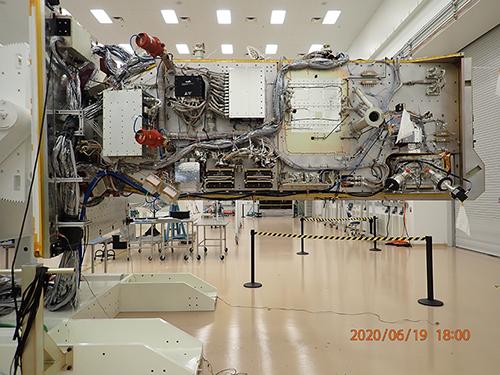
IMAGE: The Integrated Electronics Module was recently integrated onto the JPSS-2 spacecraft.
view more
Credit: Credits: Northrop Grumman
In four different U.S. cities are four shipping containers, each one carrying an instrument that will travel to space to capture critical data on our planet’s weather and climate.
These are the instruments built for JPSS-2, the third satellite of the Joint Polar Satellite System series, to be named NOAA-21 when it reaches orbit. Next month, the instruments will start getting shipped to the Northrop Grumman facility in Gilbert, Ariz., to get integrated into the spacecraft.
The first instrument to make the trip will be VIIRS, the Visible Infrared Imaging Radiometer Suite. VIIRS is like the eyes of JPSS. It gives us infrared images of hurricanes, tells us about snow, ice cover, clouds, fog and dust, and it helps us locate and map wildfires. Its Day-Night Band, the satellite’s eyes at night, can distinguish between city lights, moonlight, lightning and auroras.
VIIRS is slated to ship to Northrop Grumman’s Gilbert, Arizona, facility in August from the Raytheon facility in El Segundo, Calif., and to go on the spacecraft in September. The instruments will be integrated serially, meaning each will be shipped a month apart and integrated a month after that. After VIIRS will be OMPS, the Ozone Mapping and Profiler Suite, which was built by Ball Aerospace. Then ATMS, the Advanced Technology Microwave Sounder, which was built by Northrop Grumman and will be shipped from their facility in Azusa, Calif. And finally CrIS, the Cross-track Infrared Sounder, which was built by L3Harris Technologies.
Upon arrival at the vendor facility in Arizona, the team will check the VIIRS instrument’s performance and then begin the integration process. During mechanical integration, the instrument will be mounted and then bolted onto the spacecraft. Electrical integration involves attaching all the wiring and checking the connectors.
“We’ll turn it on, flow data through it, make sure the data flows as it should, and that there’s power everywhere,” said Keith Walyus, Flight Project Manager for the Joint Polar Satellite System.
After all of the instruments are on, engineers will perform a series of tests. They’ll test its ability to withstand the extreme vibrations and temperatures of launch and orbit. They’ll blast it with radiation signals and deploy the solar panels. And they’ll test that the instrument and spacecraft are working efficiently together.
When the testing is complete, the satellite will be packed up and shipped to the launch site at the Vandenberg Air Force Base in California. The launch is currently scheduled for 2022.
“Everything is coming together,” Walyus said. “We have a lot of work ahead of us, but no big issues that we see. It’s all just a matter of working through it in this new COVID environment. It’s something everyone has to wrestle with, and we’re no exception.”
###
TDnews














